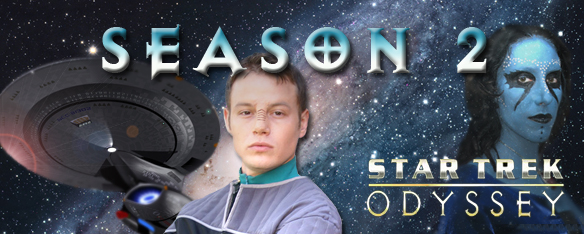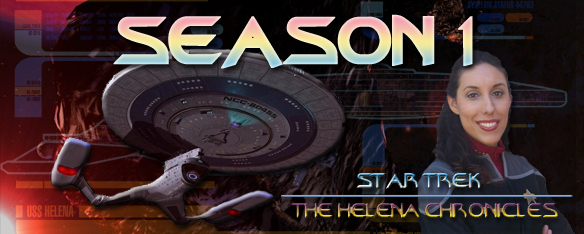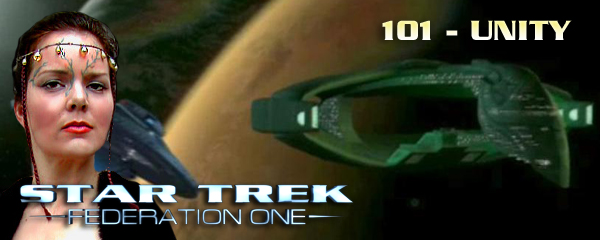Some older Star Trek fans are apparently lamenting having been deserted by the entertainment franchise which has sustained and occupied them for so many years. Because they believe, as non-industry consumers tend to, that this franchise is being run by individuals who have an awareness of anything outside the narrow scope of “it made money this past quarter.” It isn’t, and y’all should know better by now.
In fact, Trek is being run by the same cowardly and unimaginative MBAs in expensive suits that run the company you probably work for… if you’re fortunate enough to still have a job with benefits. These guys infest so many different business categories—having been taught exactly how little they need to know about any of the industry-specific businesses they will ever work for—that their behaviors are remarkably predictable as a group, using generalizations I would personally find offensive were I one of them. Call me a hypocrite if you must, but know that I am not Management.
I could write eight paragraphs about Viacom/CBS/Paramount having greenlit J.J. Abrams’ proposal for a new direction for Star Trek, but three facts obviate the need: (1) Paramount Marketing is a revolving door of suits who apparently need to outsource such complex tasks as unzipping their pants to take a piss, (2) Abrams is a smart guy who pitches good ideas to the aforementioned helpless suits about how to revive struggling franchises they have no creative grasp upon, (3) he executes well, which gives him durability in a business category known for a severe attention deficit disorder.
Abrams has succeeded in creating a Star Trek which—surprise!—appeals to a broad audience that is not over 45 years old and—surprise!—doesn’t bend over backwards to cater to that same dwindling demographic. It is indeed a sad month for Comic Book Guy, because his encyclopedic knowledge of canon-specific facts and figures are now relatively useless. And—surprise!—Comic Book Guy is all over the multitudinous fan forums, spewing vitriol and disdain with his obviously superior knowledge about what would constitute a truly successful revival of a dwindling entertainment franchise, without offending his deeply-held religious beliefs.
Fear not, neglected canon-wankers. Despite the fact that you feel unable to accept your archetypical Jim Kirk as a timeline-screwed troubled child who needs a mentor to kick-start his latent greatness, you now have choices.
Star Trek fandom has been enabled by Moore’s Law in a bunch of directions, not the least of which are the capability to produce watchable fan films which dutifully—if variably—carry the Continuity Tradition. Here’s one group of them.
Hidden Frontier Productions has been laboring in the boonie vineyards since 2000, but they didn’t catch my attention until a chance perusal of definitive Trek fan Web resource Memory Alpha revealed to me that there were such things as fan-made movies which were not full of stormtroopers and lightsabers. (I’m reasonably certain it was Memory Alpha, but it could very easily have been another one of those early herculean resource pages that fans love to correct.)
Hidden Frontier Production’s first eponymous series lasted seven seasons, through 50 episodes, during which the producers of this effort taught themselves how to overcome the physical and financial limitations of shooting unfinanced video. Most of the series is played out in front of a green screen which chroma-keys actors into standing digital sets, which are either static images of existing professional Trek or newly created by HF staff. The group’s dramatic standard has therefore largely been limited to scenes depicting people who enter a statically-shot scene and either sit in chairs or stand in place. But towards the last two seasons of the series, the plots became interesting enough to me that this stricture became secondary, and they got better at minimizing the limitations.
The Hidden Frontier series takes place during what I surmise (without in-depth Trek-nerd research) is the immediately post-Voyager era, and draws heavily upon existing canon in attempts to continue stories based upon issues and events raised by televised and theatrical Trek.
The series deliberately and prominently featured characters of various sexual orientations in its plots, which inevitably paved the way for fan-favorite New Voyages/Phase 2 to feature such previously taboo content in its most recently released episode—to a great deal of debate and discussion over the acknowledgment of gay or bisexual individuals in our collective future.
HF’s treatment of such content was initially what one might expect of a community theater production, with deliberately overstated scenes between romantically involved characters whose performances were directed with far more indication than a Trek fan might expect of their straight equivalents. But the point was made, and over time the series became less obviously didactic about it.
Hidden Fronter‘s storyline ended and spun off many of its characters into different series for this production group to work upon. Odyssey, The Helena Chronicles, and Federation One all take place subsequent to and dependent upon the events depicted in the parent series. I have to say that’s the order in which I rank them.

Odyssey is HFP’s take on Voyager, Paramount’s second-to-last Trek tv series. A cast change (which directly benefited James Cawley’s Phase 2 series) actually improved the believability of this show’s lead character. Odyssey places a Federation starship far from home, marooned by adversity in hostile territory. Lieutenant Commander Ro Nevin (played by Brandon McConnell) is an uncertain naif, thrust into command of a starship by unfortunate circumstance. McConnell’s performance, along with that of a largely solid cast, carries a series of stories which impress me far more than the standard fan effort I’ve come to expect. The ship itself undergoes far more continuous tribulation than Janeway’s Voyager ever did, incurring damage and casualties which don’t magically disappear at the end of an hour, one of many qualities that the Paramount show repeatedly demonstrated to ill effect.
 The Helena Chronicles posits a starship whose captain is investigating the disappearance of the above-mentioned Odyssey. Helena‘s Captain Faisal (Sharon Savene) deliberately violates orders to find compatriots on the lost ship. Her status becomes that of a rogue, and she is pursued by the rest of the fleet, despite having discovered valuable truths and having performed actions of worth.
The Helena Chronicles posits a starship whose captain is investigating the disappearance of the above-mentioned Odyssey. Helena‘s Captain Faisal (Sharon Savene) deliberately violates orders to find compatriots on the lost ship. Her status becomes that of a rogue, and she is pursued by the rest of the fleet, despite having discovered valuable truths and having performed actions of worth.
Both Odyssey and Helena feature characters who display deliberately eccentric behavior, but very rarely cross into Mary Sue territory. Helena generally exhibits more space-going action than Odyssey. Odyssey lends itself to far more space-operatic villainy, as did Hidden Frontier. The storylines of the two newer series dovetail into a common tapestry.
Post-production quality has improved remarkably in the two or three years that I’ve been watching this group’s efforts. CG and compositing capability have progressed, but neither could carry the full weight of a good story without the advances in writing and editing that I’ve seen in both. Acting has improved, but anyone who’s itching to compare a volunteer fan effort with a regular commercial tv series should scale down expectations a bit. Given that, some might be surprised by what they see here.
Neither of these series seem weighed-down by HF‘s albatross, which was initially a soap-operatic ordeal, full of interminable scenes of people sitting in chairs and arguing with each other in long takes. Most of that is gone, or handled with much more skill. There is fun to be had here now.
 I can’t say the same about the work done by Federation One, a series which follows the United Federation of Planets’ President, her entourage, and the crew of the ship she lives aboard (an equivalent of Air Force One).
I can’t say the same about the work done by Federation One, a series which follows the United Federation of Planets’ President, her entourage, and the crew of the ship she lives aboard (an equivalent of Air Force One).
The material is mostly simplistic politics and subterfuge, written with observably less attention than Odyssey or Helena. The President herself is portrayed by Rebecca Wood, whom I’ve seen perform capably within the HF universe in other roles and with far more believability. In fact, most of this show’s cast seems to be directed with less discretion and finesse than HFP’s other series. This is unfortunate, considering how much good work some of this cast delivered in the parent show.
Hidden Frontier Productions also produced two team-up segments with the excellent Scottish fan group Starship Intrepid, to very good effect. I’ll write a bit more about them in another post, hopefully before the decade ends.
I find it heartening that at least one fan-based effort is cranking out enough free entertainment for fans that it’s possible to distinguish such variability in their collective work. Production values have improved to the extent that much of the CG work is remarkably similar to the pro stuff when viewed on my iPod touch. The work deserves to be seen; these are good stories, assuming you have the patience to wait for their release.
And none of them shows a starship’s hangar deck with girders that cross a shuttlecraft’s flight path.




